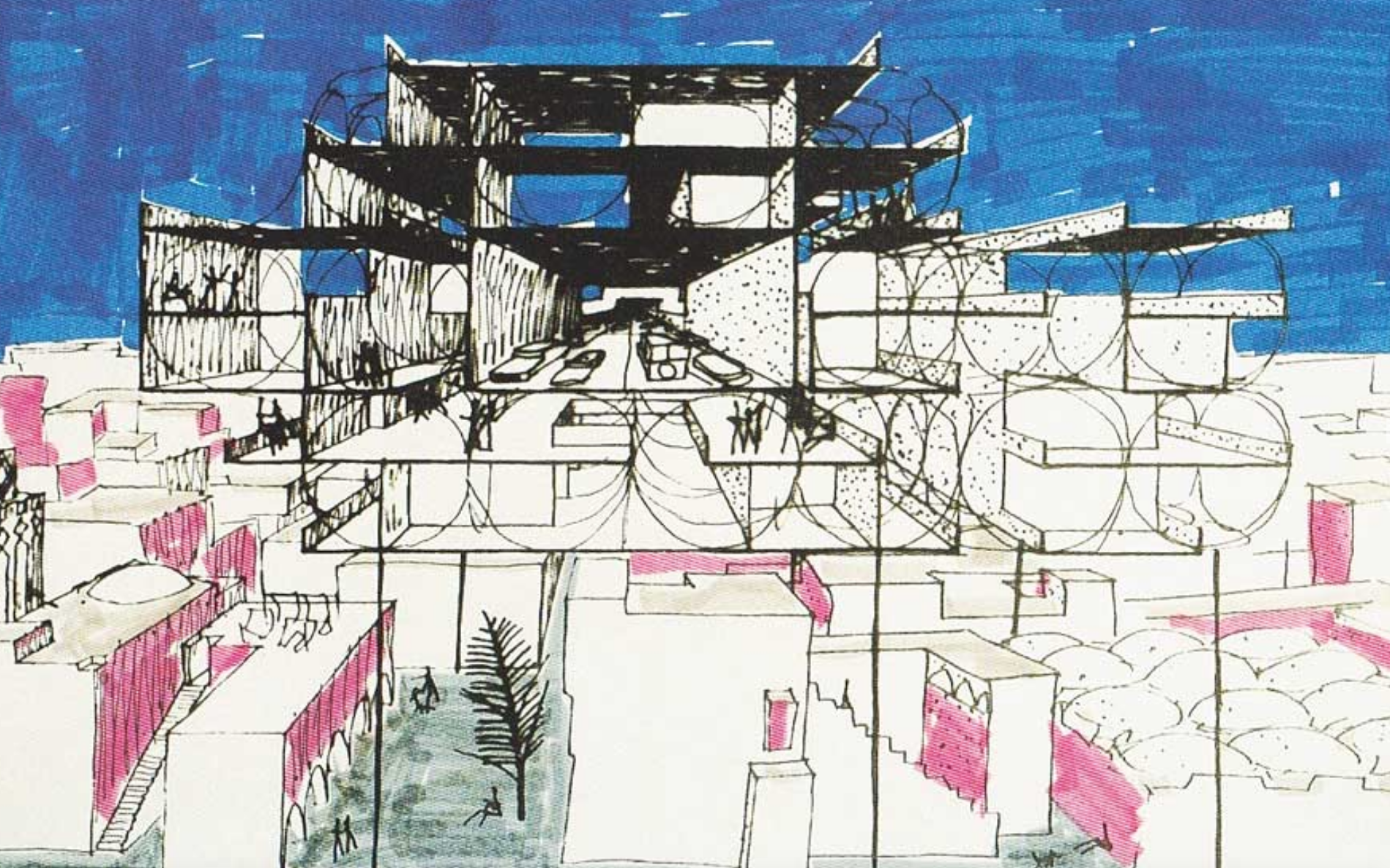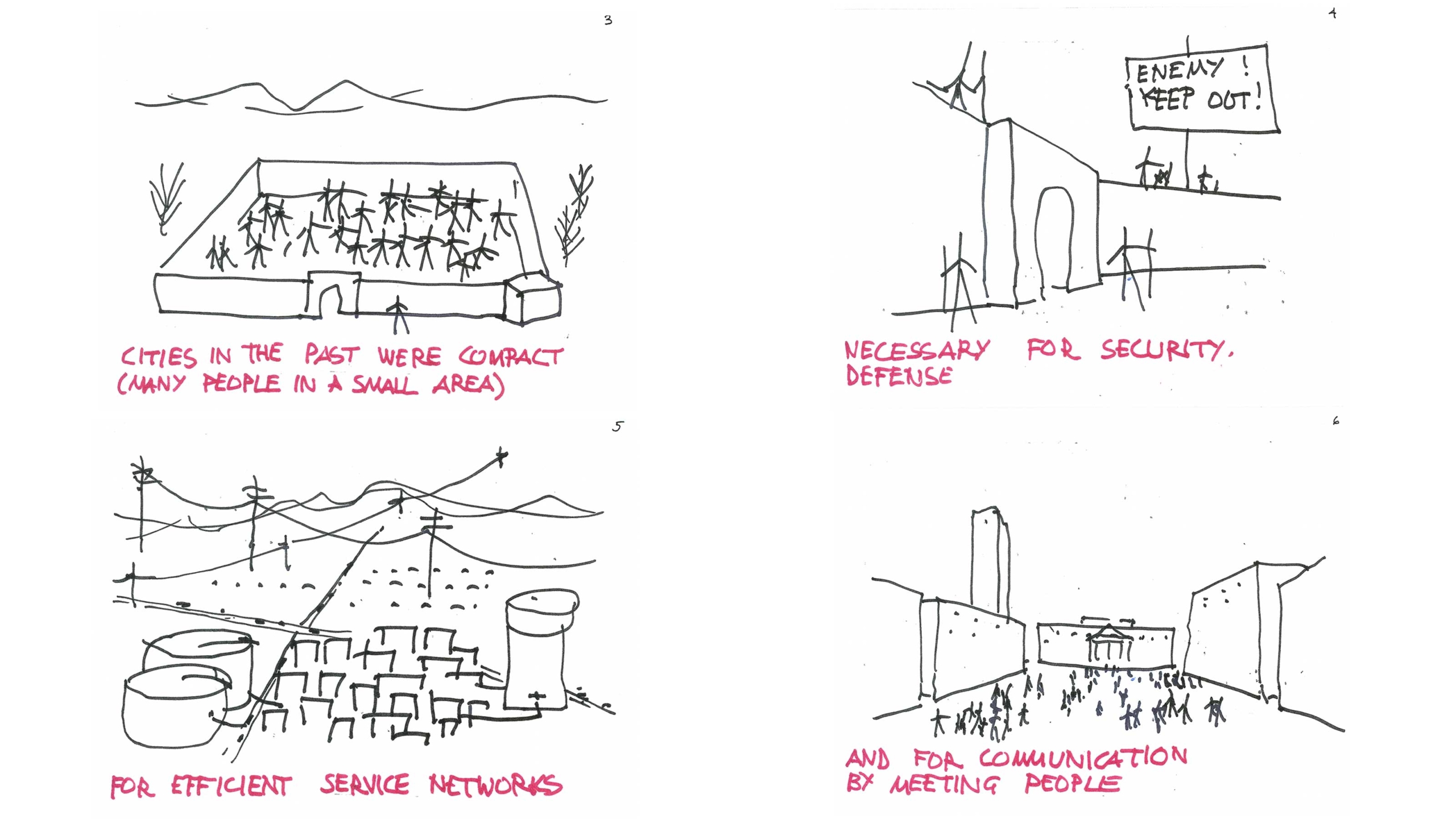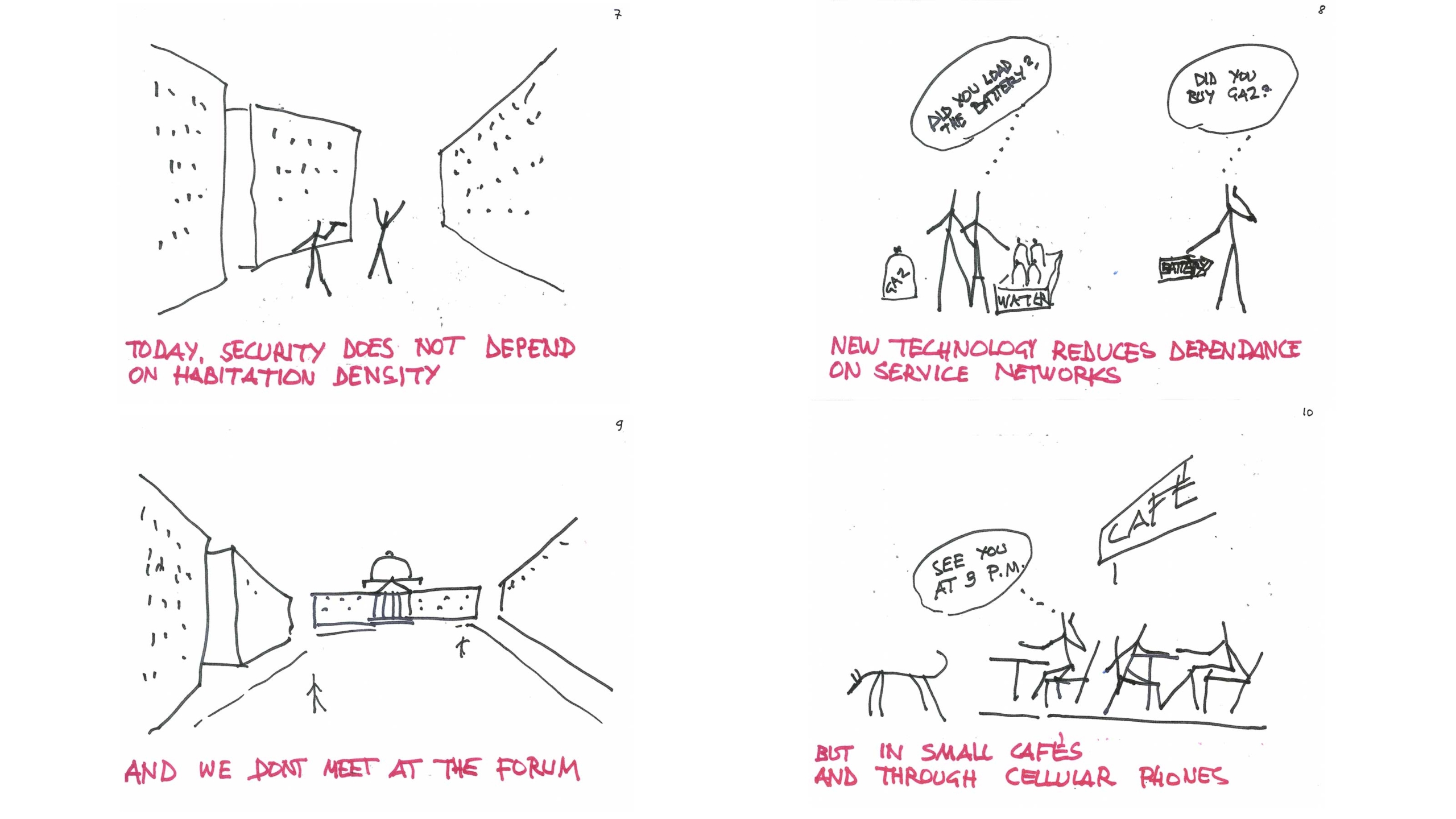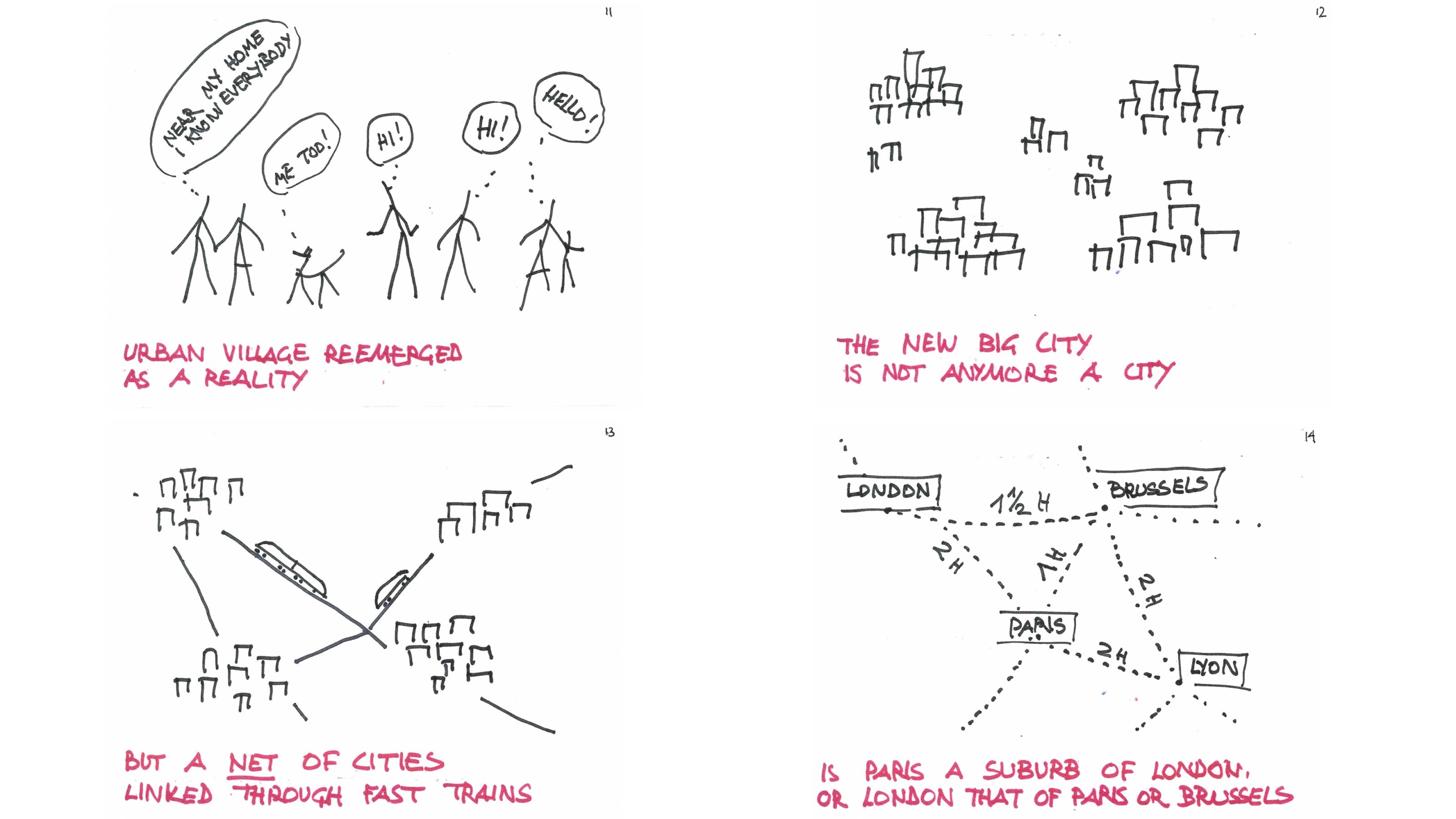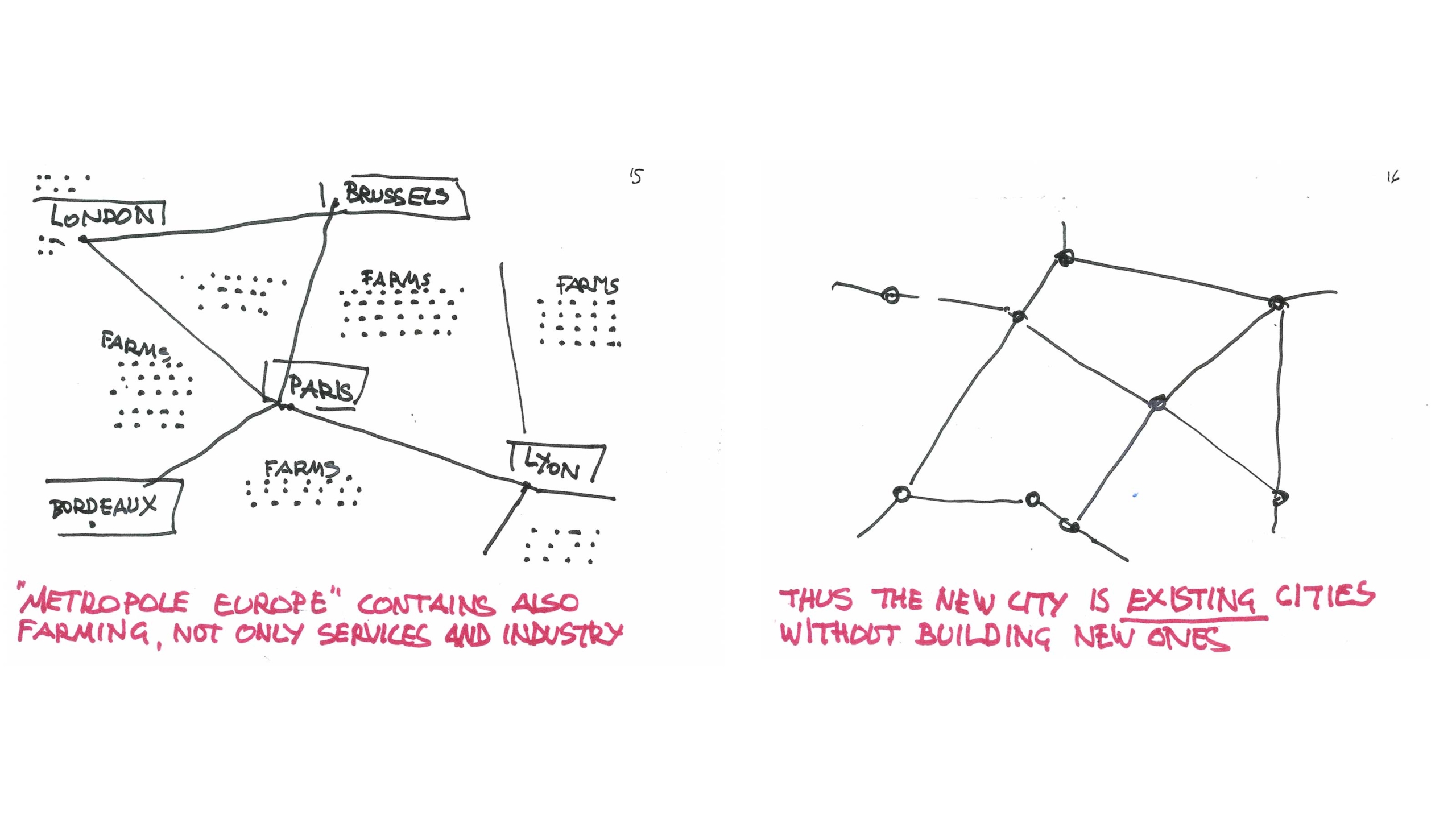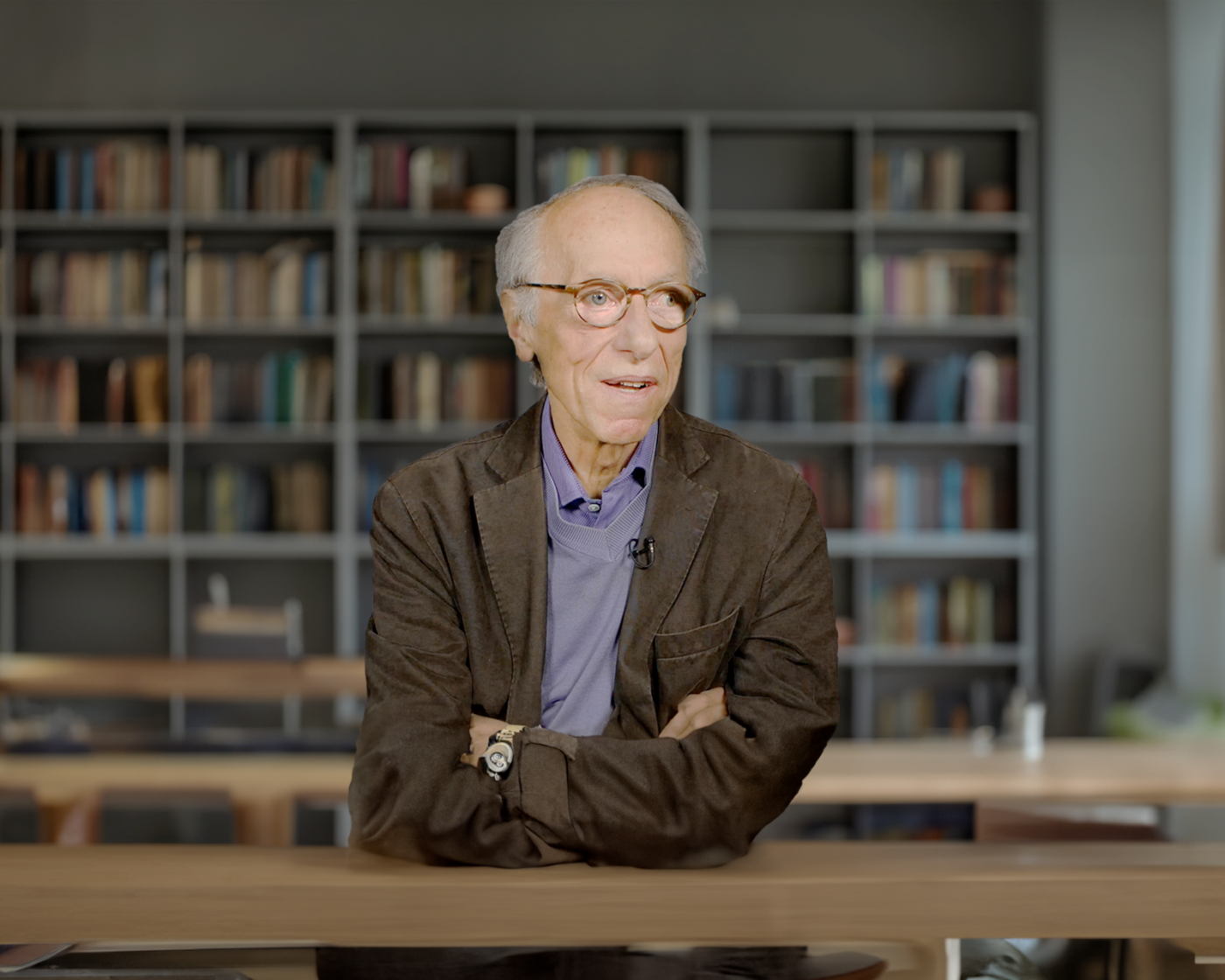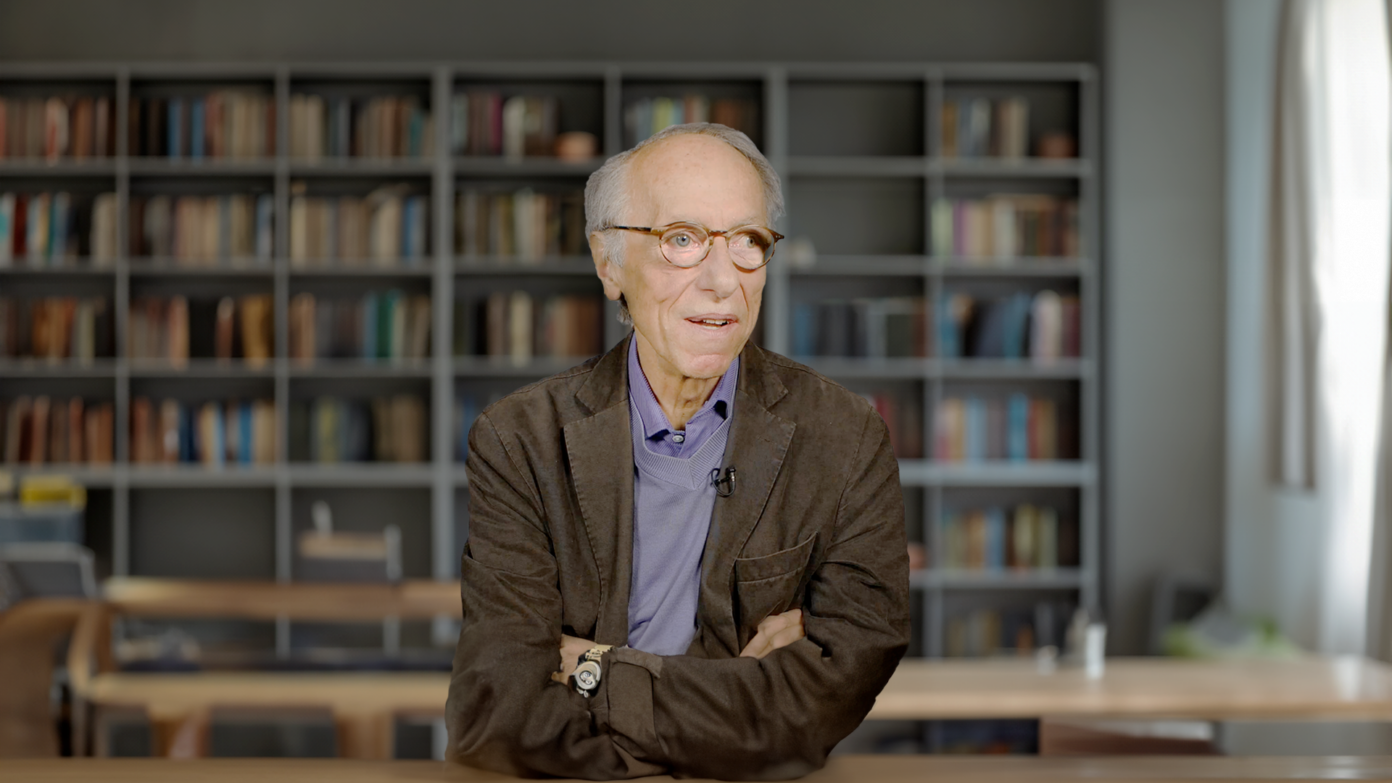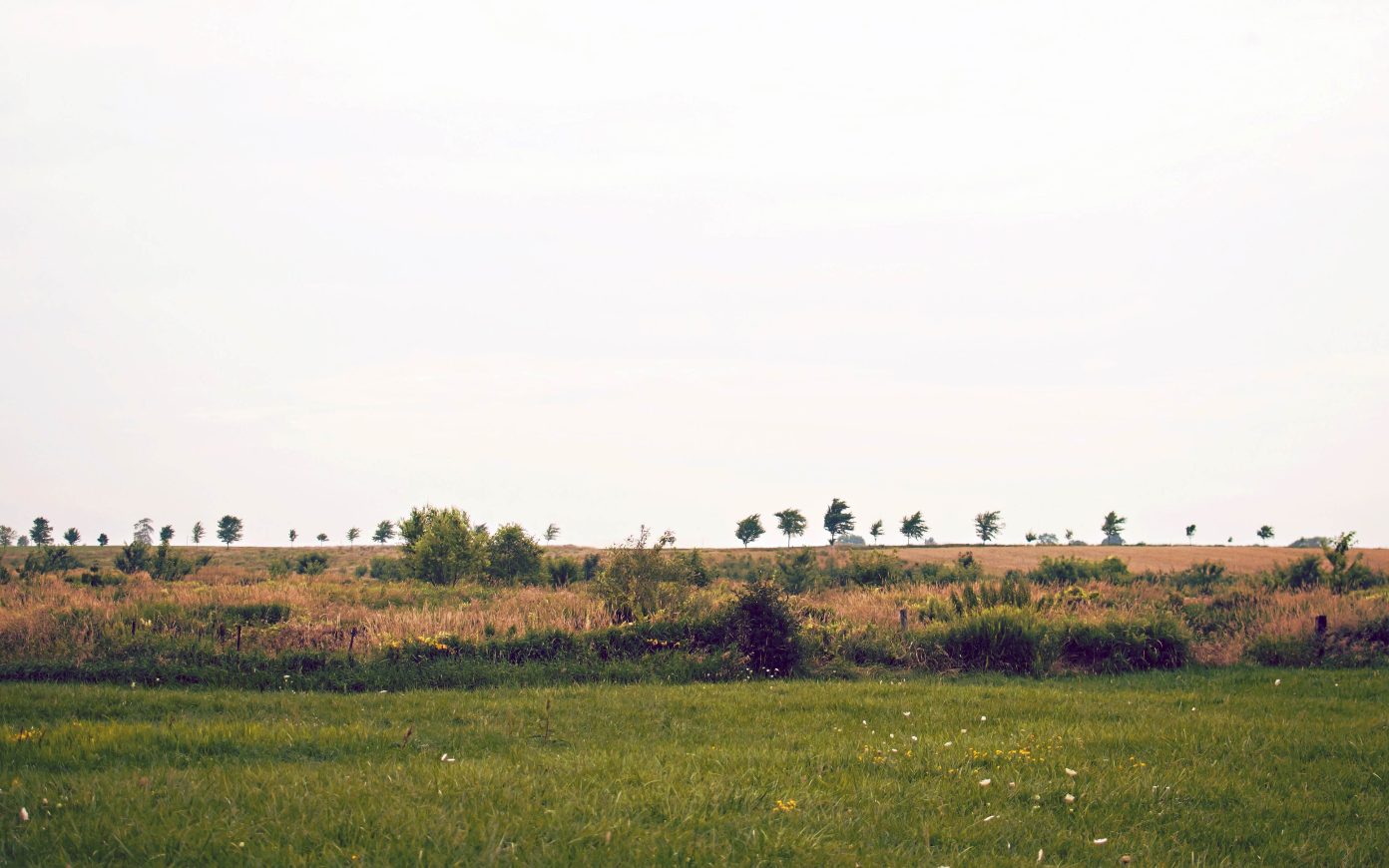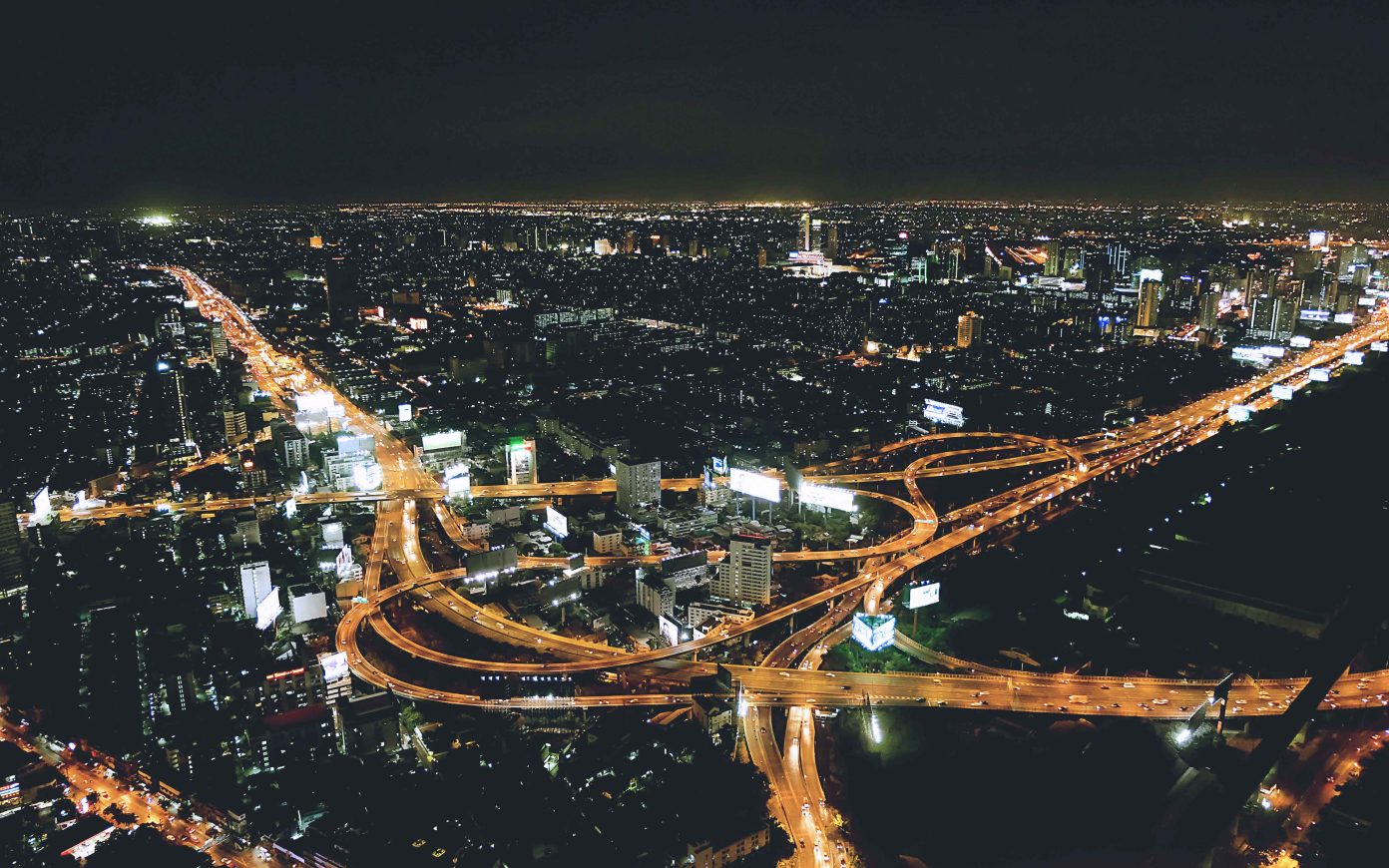It is a fact: technology has changed communication. It doesn’t allow us to literally speak with everyone but at least it frees us from the proximity imperative. The location of the “critical discussion group”—the ten to fifteen people I speak with—has changed. We can talk without being constrained by geography, whether we are in China or the United States. The second major shift has to with the liberation of individuals from networks. When I came up with the concept of “mobile architecture” in the 1950s, I thought humans were limited by networks, be they phone networks or electric grids. But today we aren’t dependent on them anymore! Our mobile phones have batteries that were inconceivable only fifty years ago. This is certainly the most dramatic change in modern life and when they will eventually be fully powered by solar energy, we will have truly become independent of the grid.
But modern technology is not always properly harnessed. Digital organization changes urban behavior. As people now work on computers, there is no need to be piled up in fifty-six-story skyscrapers. This only results in congestion and an overburdened traffic system, thromboses so to speak. Such work could very well be carried out at home, should our homes be made more suitable. Industrial activities are also automated and a production foreman or an engineer could be running a plant from home.
We have to stop and consider what we do not get from technology however—personalized service, which is human-centric by definition. We have yet to truly discover one-person businesses—electricians, plumbers, nurses are models of trades that are strongly person-centric and human-centric. When one employment sector dwindles, another opens up. That will significantly change urban proximity. When I was a student, we were taught about the importance of the marketplace because this was where people would meet. That is a thing of the past. I never see encounters in supermarkets, all the more so given that people are increasingly shopping online. People don’t meet in the large main square, the marketplace, but on the phone, which is the medium used to set appointments. Proximity isn’t necessary anymore as modern technology now allows for the dilution of cities. This situation is entirely new and we haven’t found how to apply it yet, but it is clearly something that can be done.
People are constantly talking about the “Grand Paris” project, which is one of the biggest mistakes of the post-war period. It certainly takes longer to go from Paris to Pantin during the rush hour than to Brussels. Europe must be viewed as a city that uses high-speed rail as a mass transit system. Politically, the only thing missing now is a European commuter pass. Urban proximity has changed and we are witnessing the emergence of the urban continent. In Japan, high-frequency high-speed train service has existed for a long time. Should I decide that proximity is a three-hour journey, then London, Paris, Brussels, Amsterdam, Milan, Marseille, Lyon, and Bordeaux form one single city. This is a scenario I had contemplated fifty or sixty years ago and that is now becoming a reality thanks to high-speed rail, batteries, and mobile phones.
